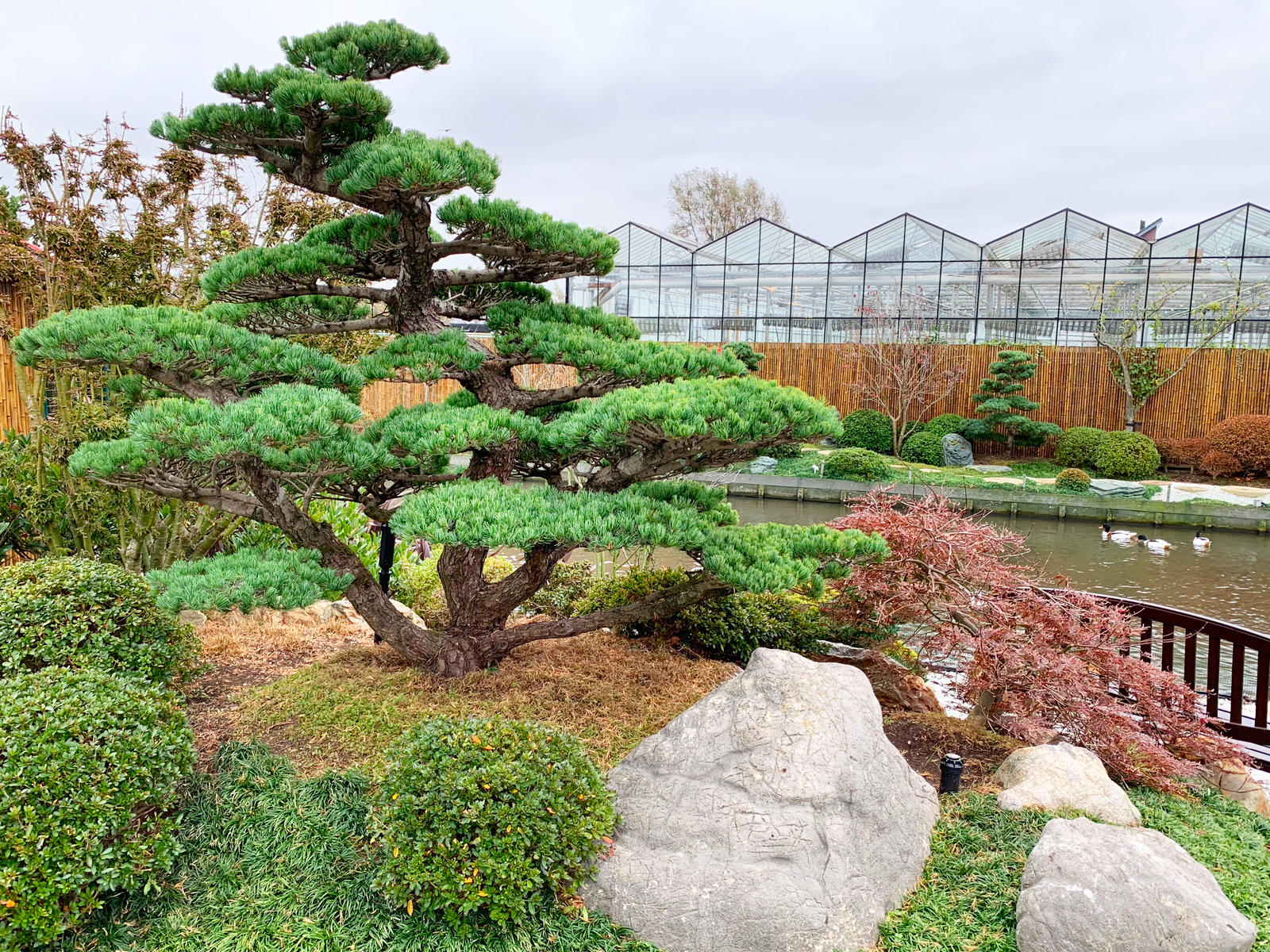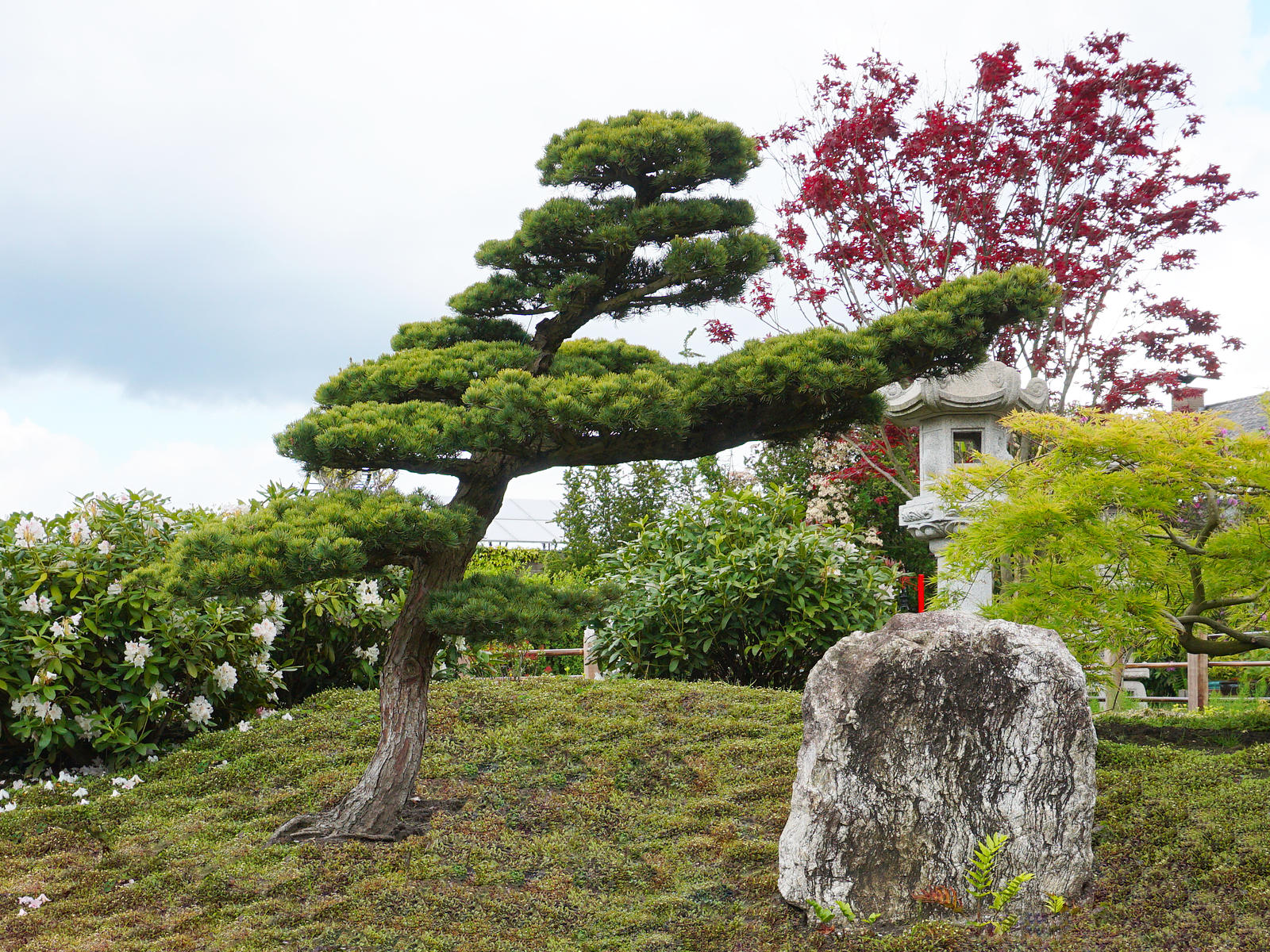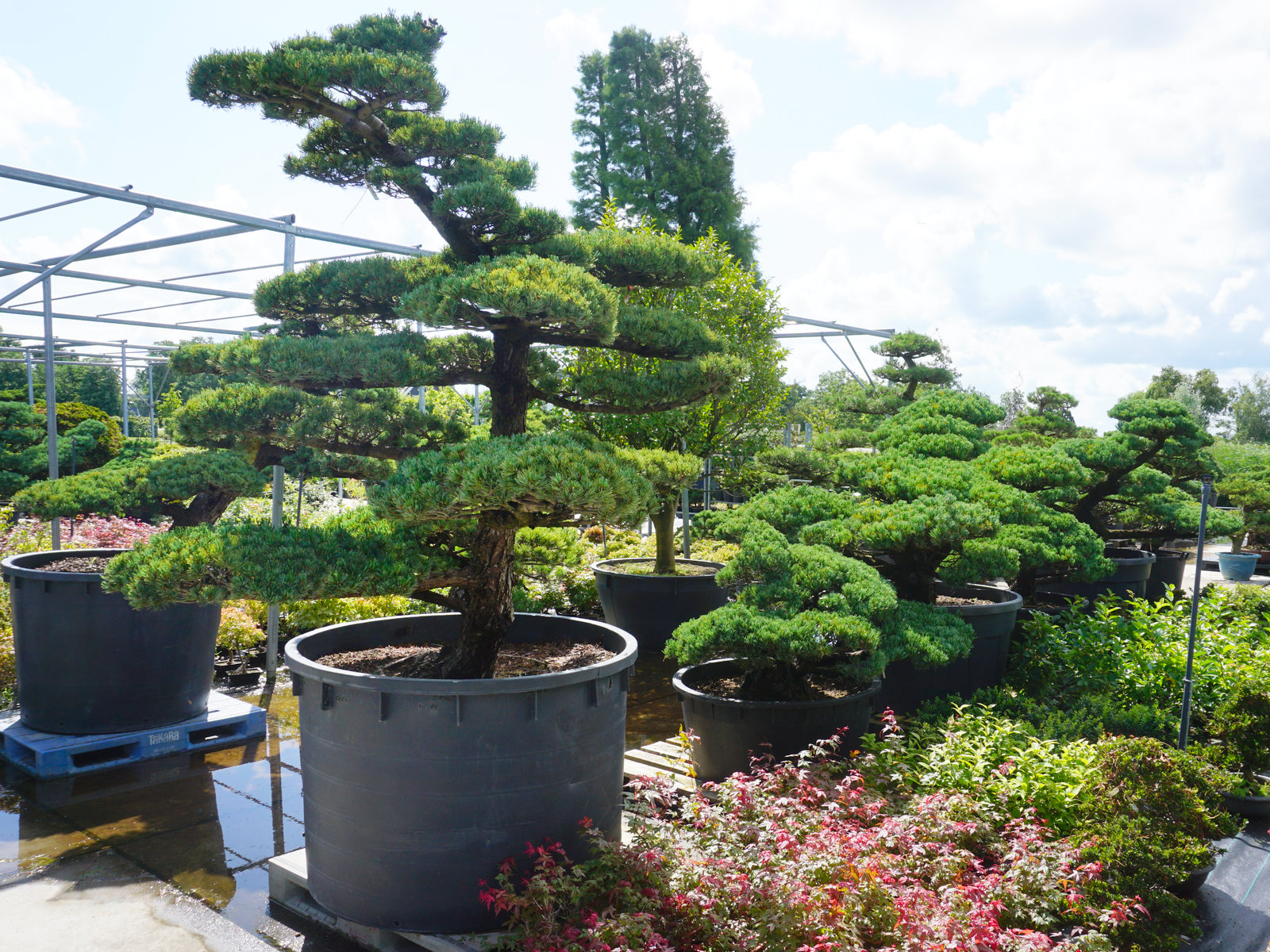Japanese Trees & Plants - Information

Plants, Trees, and Ground Covers in the Traditional Japanese Garden. An In-Depth Exploration Based on Historical Aesthetics and Sakuteiki Principles. A traditional Japanese garden is not merely a curated collection of flora, but a living expression of harmony, impermanence, and the natural world. Central to this philosophy are the plants, trees, and ground covers that form its verdant structure. Each element, carefully chosen and deliberately placed, works in unison to convey a scene of natural serenity and subtle symbolism. Rooted in centuries of horticultural tradition, and guided by the principles found in Japan's oldest garden planning manual, the Sakuteiki, the flora of a Japanese garden plays an essential role in crafting its timeless atmosphere.
At Yokoso Japanese Gardens, we are proud to offer a curated selection of authentic, high-quality plants, trees, and ground covers, sourced and cultivated with a deep respect for traditional Japanese gardening values. Our collection represents the essence of the Japanese garden tradition, made available exclusively through our expertise and dedication.
Trees in the Japanese Garden: Guardians of Time and Season
In the traditional Japanese garden, trees are not only aesthetic focal points, they are symbols of longevity, strength, and seasonal change. Often pruned using the technique of niwaki, they are shaped to express age, resilience, and natural asymmetry, echoing the appearance of trees growing in the wild. Key Tree Species:
Pinus thunbergii (Matsu) - A cornerstone in karesansui (dry landscape) and strolling gardens, symbolizing endurance and virtue.
Acer palmatum (Momiji) - Revered for its delicate leaf form and seasonal brilliance, especially in autumn.
Cryptomeria japonica (Sugi) - A sacred tree in Japan, often used to provide vertical structure and spiritual presence.
Prunus serrulata (Sakura) - Famed for its transient spring blossoms, reflecting mono no aware, the awareness of impermanence.
Bamboo (Take) - Although technically a grass, bamboo serves many structural and symbolic functions. It suggests strength, flexibility, and purity. Clumps of bamboo, such as Phyllostachys species, are often used as screens or background plantings.
Placement According to the Sakuteiki
The Sakuteiki advises careful tree placement to enhance borrowed scenery (shakkei) and create a natural flow of sightlines. Trees are positioned to frame views, mark transitions between garden sections, and reflect seasonal change. For instance, evergreens are used to provide structure and year-round greenery, while deciduous trees offer drama in autumn and lightness in spring.
Shrubs and Understory Plants: Texture, Form, and Seasonal Rhythm
Shrubs and small-scale plants form the middle layer of the Japanese garden, offering a rich textural palette and a bridge between the ground and canopy. These species contribute to a layered composition that mimics the natural growth patterns found in Japanese forests. Common Species:
Camellia japonica (tsubaki) - With glossy leaves and early-spring blossoms, the camellia is both refined and resilient.
Azalea species (Tsutsuji) - Known for their springtime bursts of color and compact growth, perfect for border plantings.
Nandina Japonica (Nanten) - Valued for its winter fragrance and subtle evergreen foliage.
Peony (Botan) - Often used in temple or aristocratic gardens, peonies add lush, luxurious blooms. They are symbols of wealth and honor.
Hydrangea (Ajisai) - Blooming during the rainy season, hydrangeas provide texture and color. Their shifting hues reflect the garden's responsiveness to moisture and light.
Placement Principles
The Sakuteiki emphasizes the integration of shrubs with stones and water features, urging placement that evokes natural forest edges and mountainside terrain. The intent is to avoid artificiality, favoring groupings that feel spontaneous and uncontrived.
Ground Covers: The Soft Foundation of the Garden
Ground covers in Japanese gardens are used to create continuity, soften edges, and evoke the forest floor. These elements are subtle but essential, contributing a sense of timeworn age and permanence. Popular Ground Covers:
Moss (Koke) - Moss is perhaps the most spiritually resonant ground cover in Japanese gardens. Associated with age and tranquility, moss carpets evoke the passage of time. Common species include Hypnum, Dicranum, and Polytrichum. Moss thrives in shaded, moist environments and is often used around stepping stones, water features, and stone lanterns.
Ferns (Shida) - Ferns such as Athyrium niponicum and Dryopteris erythrosora thrive in shady corners and provide fine, feathery textures. Their prehistoric forms contribute to the garden's sense of timelessness.
Liriope (Yaburan) - Liriope is a grass-like perennial used as a low ground cover. It tolerates a variety of conditions and offers deep green foliage with occasional purple flower spikes.
Ophiopogon (Ryu no Hige) - Also known as mondo grass, this compact ground cover is often used to line pathways or as an accent between stones. The black-leafed variety (Ophiopogon planiscapus 'Nigrescens') is especially striking.
Mosses are particularly revered in Japanese garden design, such as Hypnum and Leucobryum species, which thrive in humid, shaded environments and are often featured in temple gardens. Their presence suggests age and tranquility.
Aquatic, Water Plants
Water features are common in Japanese gardens, and aquatic or marginal plants contribute to their ecological and visual harmony.
Lotus (Hasu) - Lotus flowers represent purity and enlightenment, rising above the water's surface in a dramatic display. They are often used in temple gardens or deeper ponds.
Iris (Shōbu) - Japanese iris (Iris ensata) is frequently planted near water edges or in wetland areas. Their upright form and bold flowers create a striking vertical accent in early summer.
Sakuteiki's Insights on Ground Cover Placement
Moss and ground covers should 'naturally occur' in places where water flows or shade lingers, at the base of stones, around stepping stones (tobi-ishi), and near lanterns and water basins. This echoes the Sakuteiki principle of 'imitating natural landscapes,' where human design appears invisible.
Symbolism and Seasonal Design
A traditional Japanese garden is a garden of suggestion. Through plant selection and placement, the garden hints at distant mountains, deep forests, or riversides. Seasonal bloom cycles are considered in layers, so that some element is always in bloom, transitioning seamlessly from the plum blossoms of late winter to the fiery maple leaves of autumn. This dynamic yet subtle expression of time and transience reinforces the Japanese aesthetic principles of wabi-sabi(beauty in imperfection) and shizen (naturalness), both deeply embedded in the garden's soul.
Authenticity Through Expertise: Available at Yokoso Japanese Gardens
At Yokoso Japanese Gardens, we specialize in sourcing and cultivating the authentic flora of traditional Japanese gardens. Each plant, tree, and ground cover we offer has been selected for its suitability, provenance, and aesthetic value within the framework of Japanese garden design. Whether you seek a centuries-old pine, a graceful maple, or a blanket of moss for your tea garden, our collection reflects the essence of Japan's gardening heritage. Moreover, our horticultural experts are well-versed in the historical and spiritual context of each species. We provide consultation services to help ensure that every plant is placed not only for aesthetic impact but in accordance with the time-honored wisdom of the Sakuteiki.
Conclusion
The traditional Japanese garden is a profound art form where every plant, tree, and stone holds symbolic and aesthetic meaning. Rooted in centuries of practice and guided by philosophical texts such as the Sakuteiki, its plant life is carefully curated to evoke natural harmony, the passage of time, and the beauty of restraint. At Yokoso Japanese Gardens, we honor this legacy by making authentic Japanese garden flora accessible to discerning garden enthusiasts and professionals across Europe.
#JapaneseGarden #TraditionalJapaneseGarden #YokosoJapaneseGardens #Niwaki #JapaneseMaple #GardenDesign #Sakuteiki #ZenGarden #JapaneseTrees #MossGarden #JapaneseShrubs #JapanesePlants #MossGarden #MapleTree #Sakura














Contact Yokoso Japanese Gardens